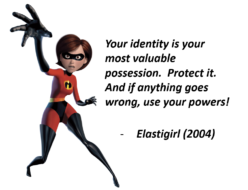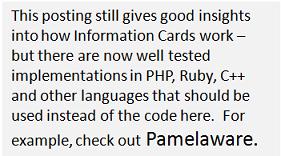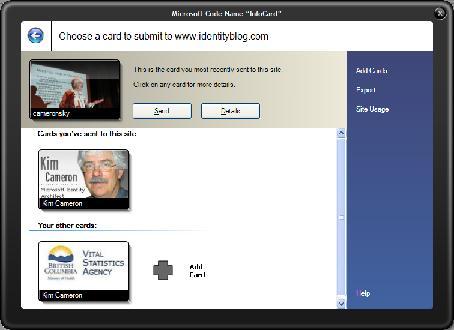Microformats Podcast, March 31, 2006
“Here's a great podcast for you. All about microformats…”
Guests: Tantek Çelik, Dan Connolly and Rohit Khare. I think it's safe to say these guys know a thing or two about the web and microformats
Here's an OPMLish podcast for you, March 10, 2006
“It's all about the draft OPML 2.0 spec and a few other things thrown in such as structured blogging, OPML tools, namespaces and microformats.”
Guests: Joshua Porter, Adam Green and John Tropea.
Reading Lists (OPML) podcast: Danny Ayers and Adam Green, Feb 12, 2006
“Last year Dave Winer started to push the idea of Reading Lists for RSS. More recently, the idea of Dynamic Reading Lists and Feed Grazing (or Grazing Lists / Glists) has been kicking around.
Its likely that Reading Lists support will become a common feature of Feed Readers / Aggregators.”
Guests: Danny Ayers, Adam Green and Joshua Porter
Attention podcast : Attention with Steve Gillmor, Feb 08, 2006
“Steve has been leading Attention conversation for some time now. In 2003 he, along with David Sifry (CEO of Technorati), initiated the attention.xml efforts and has since taken on the role as president of the non-profit Attention Trust.”
Guests: Steve Gillmor and Joshua Porter
MSN Search Champs podcast – Privacy conversation Jan 26 2006
“I attended the MSN Search Champs today….and what a day. Given the recent news and concerns around the data MSN Search, Yahoo and AOL provided to the government, there was a session set up where the 57 bloggers / online experts at MSN Search Champ were invited to discuss the topic with senior MSN management (Senior VP Yusuf Mehdi and VP Chris Payne).”
Guests: Fred Oliveira, Dion Hinchcliffe, Joshua Porter, Chris Pirillo, Thomas Vander Wal and Brady Forrest.
Attention podcast: RSS feedreaders and aggregators Jan 22, 2006
“I asked two of the RSS industry's leading lights to join me for a call and share their perspective on the question of where Attention is going with respect to RSS feedreaders and aggregators: Nick Bradbury creator FeedDemon, part of Newsgator (Nick also developed Homesite – sold to Macromedia – and Topstyle) and Kevin Burton of Tailrank (also co-founder Rojo).”
Guests: Nick Bradbury, Joshua Porter and Kevin Burton
Structured Blogging podcast with Marc Canter and Joe Reger, Dec 16, 2006
“You might have heard of the Structured Blogging initiative announced earlier this week by Marc Canter and others…there was certainly plenty of buzz and reaction to the news, but not all the reaction was rosy.”
Guests: Marc Canter and Joshua Porter
Attention and Identity with Dick Hardt and Kim Cameron, Podcast, Dec 09, 2006
“A couple of weeks ago Joshua and I had a conversation about attention data (as podcasts). In that conversation we kept touching on the topic of online identities and their management, so we thought we'd invite two pioneers of the identity space, Dick Hardt and Kim Cameron, to a podcast session and discuss how they saw the connections between these two related topics: attention and identity.”Guests: Dick Hardt, Kim Cameron and Joshua PorterGuests:
OPML = Attention Data, Attention Engines and Tailrank, Nov 12, 2005“Although we met briefly last week, Kevin Burton and I didn't manage to get enough time to discuss some of the things on our mind at the time, so we got a Skype call together and posted it as a podcast (.mp3, 42mb).
We focused the discussion around what he calls Meme Engines and I call Attention Engines, Tailrank (Kevin's latest project), OPML, RSS and Attention.xml”
Guests: Kevin Burton
Attention podcast with Joshua Porter, Nov 26, 2006
“About OPML, Attention, and empowering people.”
Guest: Joshua Porter
Web 2.0 podcast, July 01, 2006
“Richard MacManus of Read/WriteWeb and I had a Skype chat this evening and recorded the call Talked about Web 2.0, attention.xml, a bit about RSS, APIs and more.”
Guest: Richard MacManus


 I wrote my sample code in PHP 5 (I had a 4.2 version running at one point, but didn't want to keep two versions going). If you wonder why I chose PHP, I wanted it to be clear that InfoCards are not Windows-specific. You need to make sure your version of PHP has the mcrypt and openssl libraries enabled. (By way of example, these libraries are part of the default environment at
I wrote my sample code in PHP 5 (I had a 4.2 version running at one point, but didn't want to keep two versions going). If you wonder why I chose PHP, I wanted it to be clear that InfoCards are not Windows-specific. You need to make sure your version of PHP has the mcrypt and openssl libraries enabled. (By way of example, these libraries are part of the default environment at 